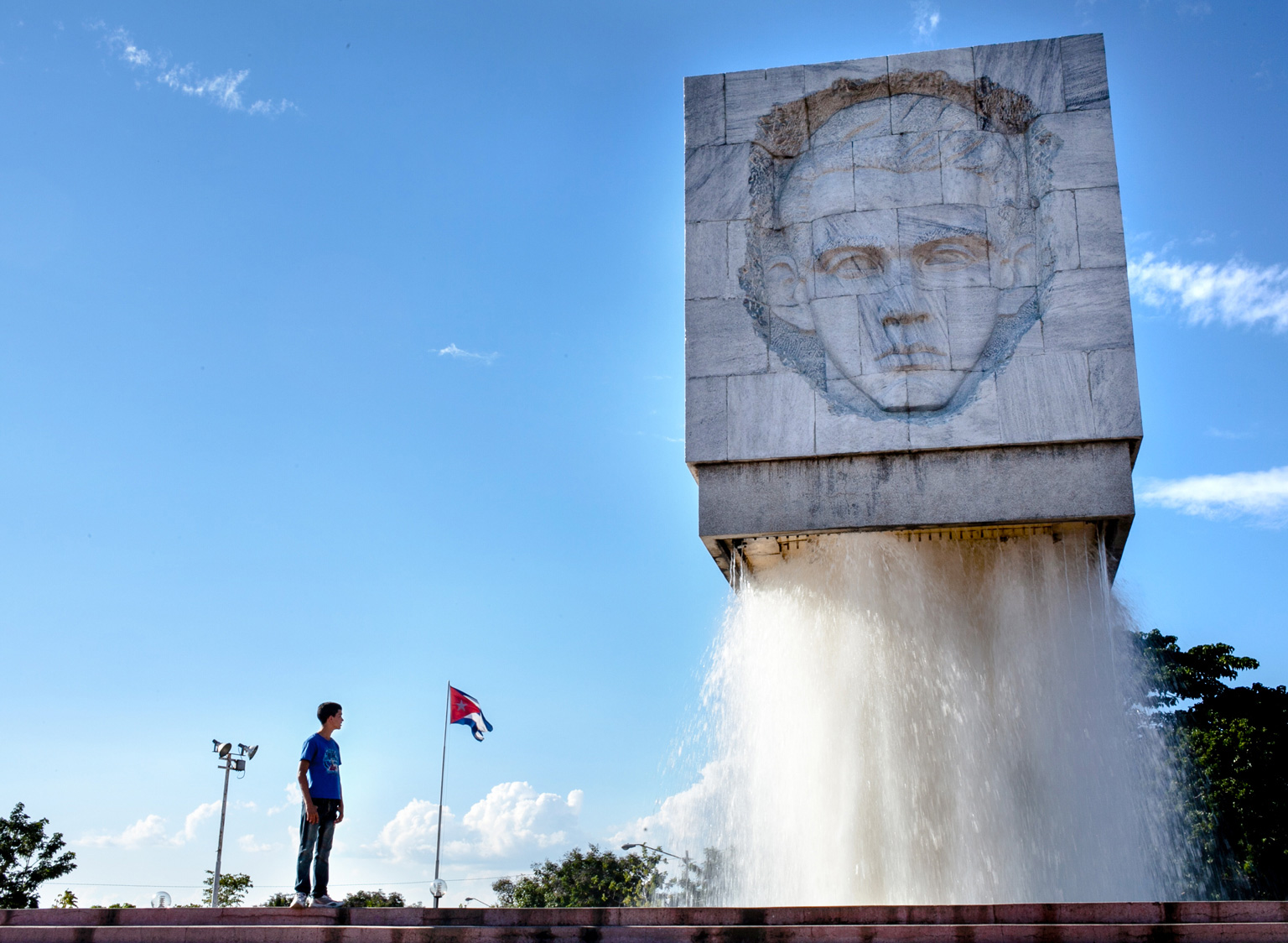REVOLUTIONARY SITES

1.Museo de la Revolución
The struggle for independence, the effort to topple Batista, and the subsequent building of socialism are highlighted in this museum (for further details see Museo de la Revolución:). It is housed in the former presidential palace, which was built in 1920 and fitted with lavish interior decoration. The caricatures in the “Corner of Cretins” poke fun at Batista and at US presidents Reagan, and Bush Sr and Jr.

Salon de los Espejos (Hall of Mirrors) at the Museo de la Revolución
2.Presidio Modelo
This model prison, completed in 1936, accommodated Fidel and Raúl Castro as well as 25 other revolutionaries sentenced to imprisonment following the Moncada attack. The hospital wing where they slept is now a museum (for further details see Presidio Modelo), while Fidel’s private room with its marble bathroom contains a collection of the books he read during his years of incarceration.

Presidio Modelo
3.Granma Memorial
 Calle Colón, Havana • 7862 4091 • Open 9am–5pm daily • Adm
Calle Colón, Havana • 7862 4091 • Open 9am–5pm daily • Adm The Granma, the vessel in which Castro sailed to Cuba with his guerrilla army, is displayed within a glass case in an open-air plaza to the rear of the Museo de la Revolución. Exhibits at the memorial include military hardware left over from the Bay of Pigs invasion.
4.Mausoleo y Museo del Segundo Frente
 Avenida Frank País, Mayarí Arriba • 22 42 5749 • Open 9am– 4:30pm Mon–Sat, 9am–noon Sun
Avenida Frank País, Mayarí Arriba • 22 42 5749 • Open 9am– 4:30pm Mon–Sat, 9am–noon Sun The small town of Mayarí Arriba commemorates combatants of the Second Front, led by Raúl Castro. The complex includes a museum exhibiting armaments and warplanes, and a landscaped mausoleum, framed by royal palms, includes the future grave of Raúl.
5.La Comandancia de la Plata
 Parque Nacional Pico Turquino, 5 miles (8 km) from Villa Santo Domingo • EcoTur, Bayamo; 23 48 7006; departures from 9am • Adm
Parque Nacional Pico Turquino, 5 miles (8 km) from Villa Santo Domingo • EcoTur, Bayamo; 23 48 7006; departures from 9am • Adm A permit and guide are required to visit Castro’s former guerrilla headquarters. Visits can be booked at the Ecotur office in Hotel Sierra Maestra.
6.Cuartel Moncada
Bullet holes riddle the walls of this former military barracks that sustained attacks by Castro’s rebels on July 26, 1953, in the opening salvo to topple Batista. The building is now a school and includes the Museo Histórico 26 de Julio (for further details see Cuartel Moncada), full of gory mementos.
7.Monumento del Che
A massive bronze figure of Che Guevara stands over bas-reliefs of Che in combat. Beneath and to the rear, the Museo del Che is Cuba’s principal museum dedicated to the Argentinian revolutionary, whose remains are interred in an adjacent mausoleum (for further details see Complejo Escultórico Ernesto Che Guevara).

Monumento del Che
8.Complejo Histórico Abel Santamaría
 Av. de los Libertadores, Santiago de Cuba • 22 62 4119 • Open 9am–5pm Mon–Thu & Sun, 1–5pm Fri • Adm
Av. de los Libertadores, Santiago de Cuba • 22 62 4119 • Open 9am–5pm Mon–Thu & Sun, 1–5pm Fri • Adm A Modernist bas-relief of revolutionary Abel Santamaría overlooks this park, where his rebel corps fired on Moncada. A museum honoring Santamaría is housed in the colonial former Civil Hospital Saturnino Lora building, later used for the trial of Fidel Castro.

Complejo Histórico Abel Santamaría
9.Museo de la Lucha Clandestina
 Calle Rabí 1, Santiago de Cuba • 22 62 4689 • Open 9am–4:45pm Tue–Sun • Adm
Calle Rabí 1, Santiago de Cuba • 22 62 4689 • Open 9am–4:45pm Tue–Sun • Adm This museum in the former headquarters of Batista’s police force tells the story of the brave M-26-7 revolutionaries in Santiago who assaulted the building in November 1956.
10.Granjita Siboney
 Carretera a Siboney, km 13.5 • 22 39 9168 • Open 9am–1pm Mon, 9am–5pm Tue–Sun • Adm
Carretera a Siboney, km 13.5 • 22 39 9168 • Open 9am–1pm Mon, 9am–5pm Tue–Sun • Adm Castro launched the attack on Moncada from this farmhouse, which is now a museum. Batista’s forces then attacked it and dumped the rebel bodies here.


